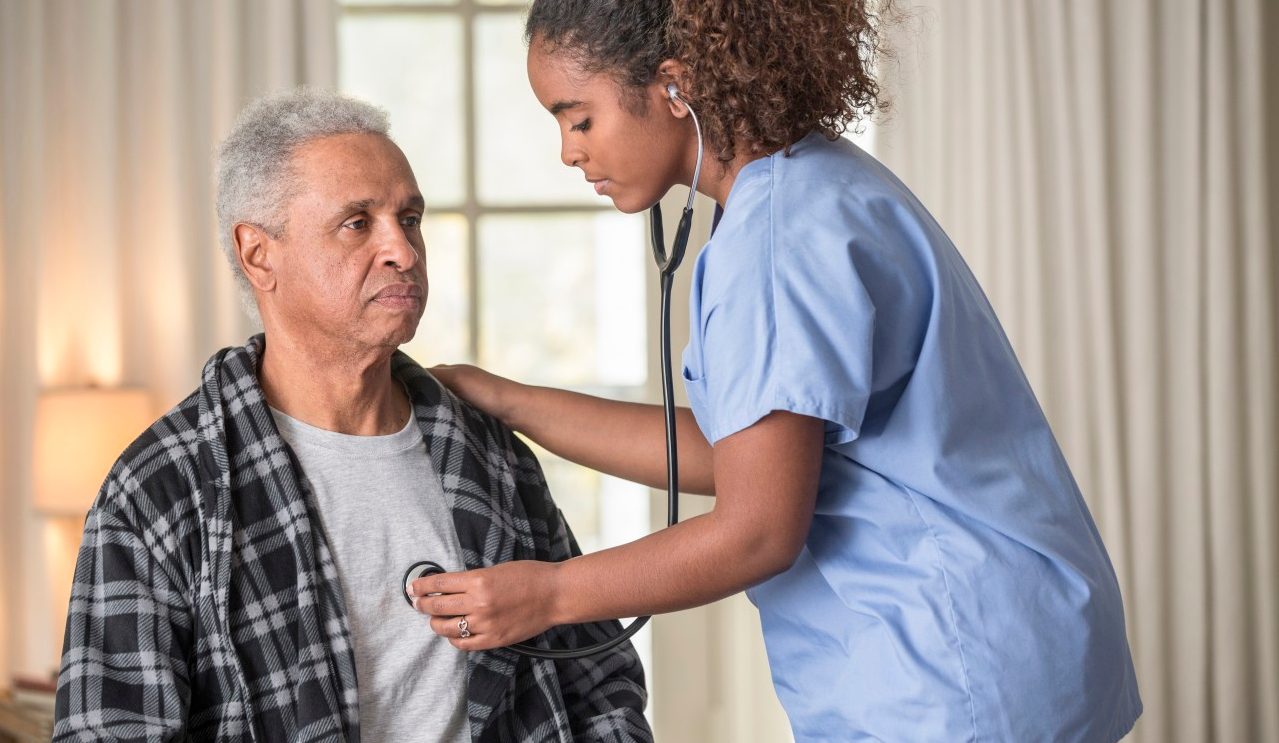More Patients Are Now “Hospitalized” at Home

These days, it may be easier to get x-rays, blood work, and other treatment you need at home for non life-threatening conditions and to stay out of the hospital.
The COVID-19 pandemic gave the movement to treat more people with health problems at home a push, as hospital beds filled up. “It is absolutely exploding,” David Levine, MD, an internist with Brigham and Women’s Hospital in Boston, told Kaiser Health News.
The big reason: In late 2020, the Centers for Medicare and Medicaid Services changed its rules temporarily to allow for more reimbursement for home care.
YOU MIGHT ALSO LIKE: What the Doctor Shortage Means for You
"Essentially, we went from zero approved hospitals to a year later over 185 hospitals all throughout the country approved for this care model," Levine said. Among them was the well-regarded Mayo Clinic, which reported that it freed up 3,300 hospital bed days in three states in 2021.
The movement could attract private insurers, if it cuts costs. In 2018, Levine’s team published a small study that found home care cut costs by 67 percent, and patients were able to move around more and get more sleep. They also ended up needing less care over time with no differences in quality.
Dolores Wiese was thrilled to get medical visits at her home in a retirement community in Phoenix when she had a serious skin infection. “It’s the best thing that's happened since running water," she told Kaiser Health News.
At-home treatment is well-established in England, Canada, Israel, and elsewhere. The Johns Hopkins Hospital, based in Baltimore, Maryland, has operated a program since 1994.
For patients, the experience could be more comfortable and safer. About five percent of all U.S. hospital admissions result in an infection, which comes to 75,000 deaths each year.
Notes Washington, D.C., medical malpractice attorney Patrick Malone: “What’s becoming an even more ominous outcome of that experience is post-hospital syndrome — a condition of extreme vulnerability to a variety of health threats to which recently discharged patients are subject,” Malone said.
The concept isn’t new, having been pioneered by Bruce Leff, MD, in a groundbreaking study. Leff is now director of The Center for Transformative Geriatric Research at Johns Hopkins School of Medicine.
Leff’s study showed that even elderly patients who needed admission to an acute care hospital for pneumonia, worsening chronic obstructive pulmonary disease, and chronic heart failure, and cellulitis could be treated at home.
The study also found that the at-home approach improved the quality of medical care while lowering costs — mostly by shortening hospital stays — a combination that is a huge part of the continuing attempts to overhaul the U.S. healthcare system. As more Americans are given the choice, at-home hospitalization is gaining steam.
Leff believes the at-home concept is still evolving. Hospitals of the future may provide very specialized, very high-tech care, while the rest of medical treatment returns, essentially, to house calls.
If you live in an urban area, the chances are higher that at-home programs are being offered. That’s because there are simply more hospitals and healthcare systems in urban areas. The American Academy of Home Care Medicine can help you find at-home services, and you can access guidelines to learn more about how at-home care works.
This at-home movement is indeed expanding as it piles up positive results. But it isn’t necessarily going to keep you out of a hospital.
Patients have to be carefully selected for the at-home option. Some need the constant monitoring only a hospital can provide for conditions that could turn life-threatening in an instant. But as this experiment continues, patients who can be hospitalized at home will become easier to identify.
As the kinks continue to be worked out — such as how to transport equipment and keep medications viable — you may be one of those folks who can receive treatment while you swing happily on your front porch some balmy summer evening.
Updated:
September 29, 2022
Reviewed By:
Janet O’Dell, RN